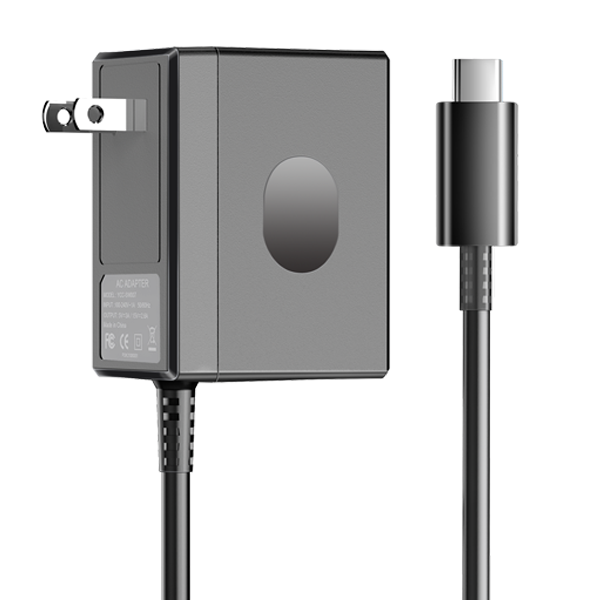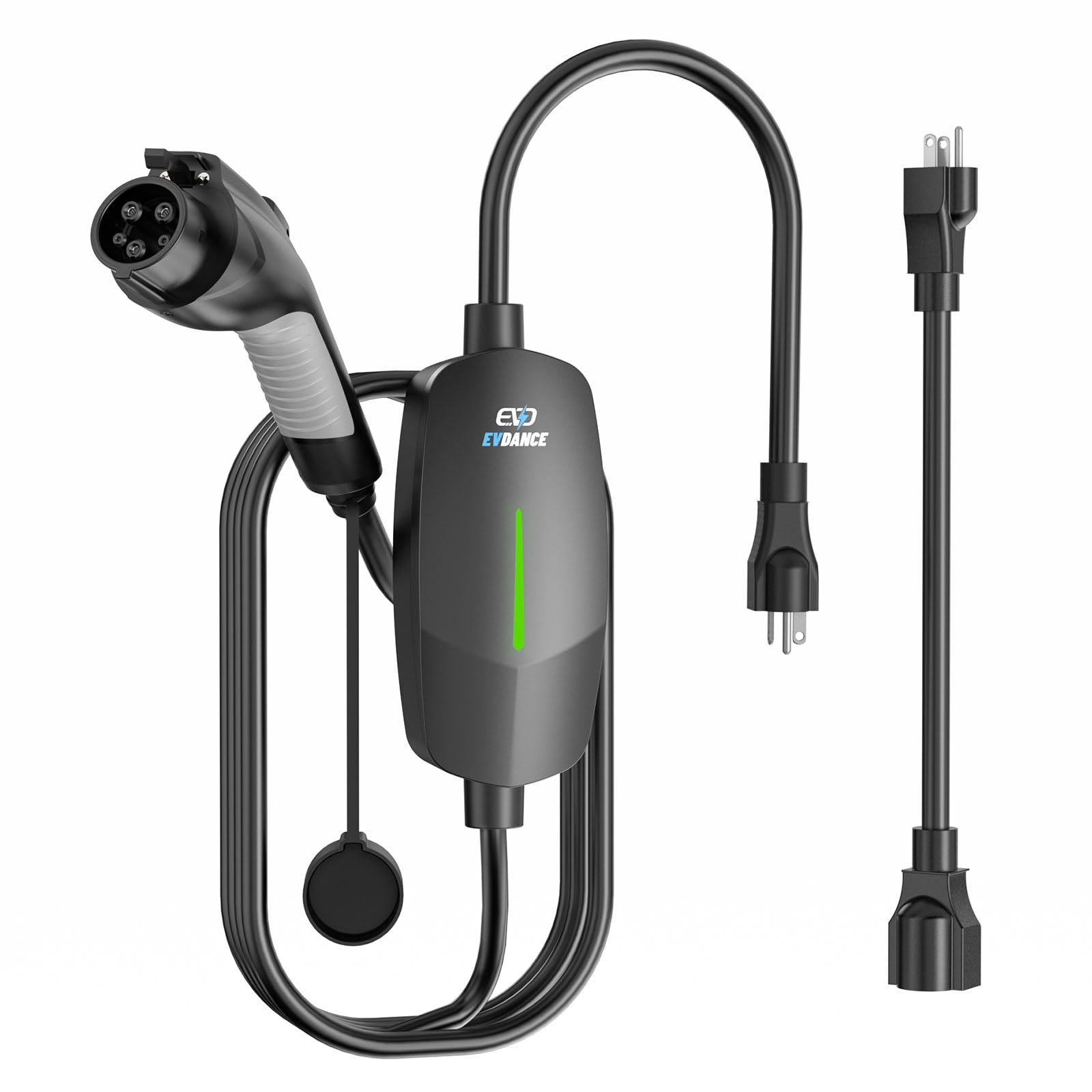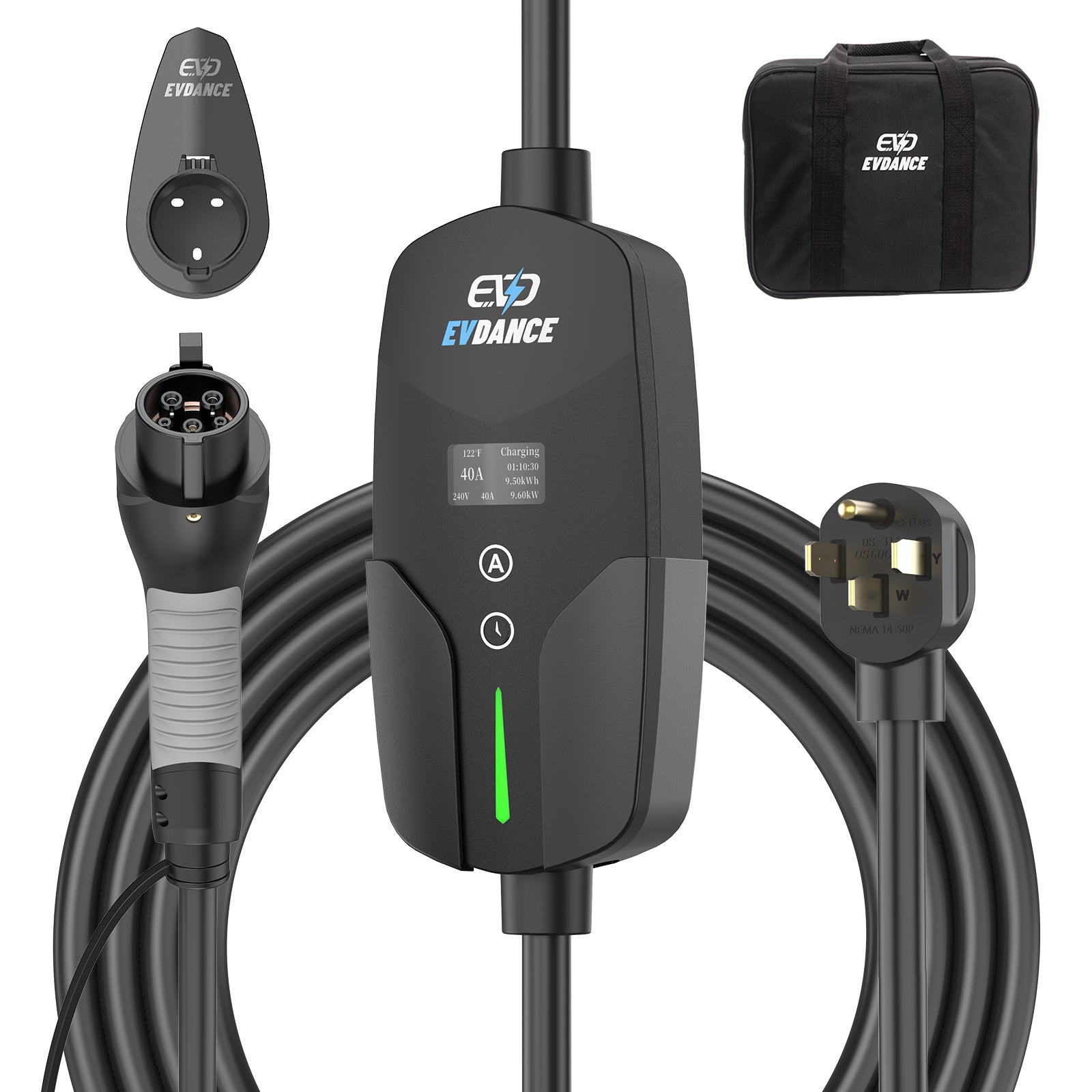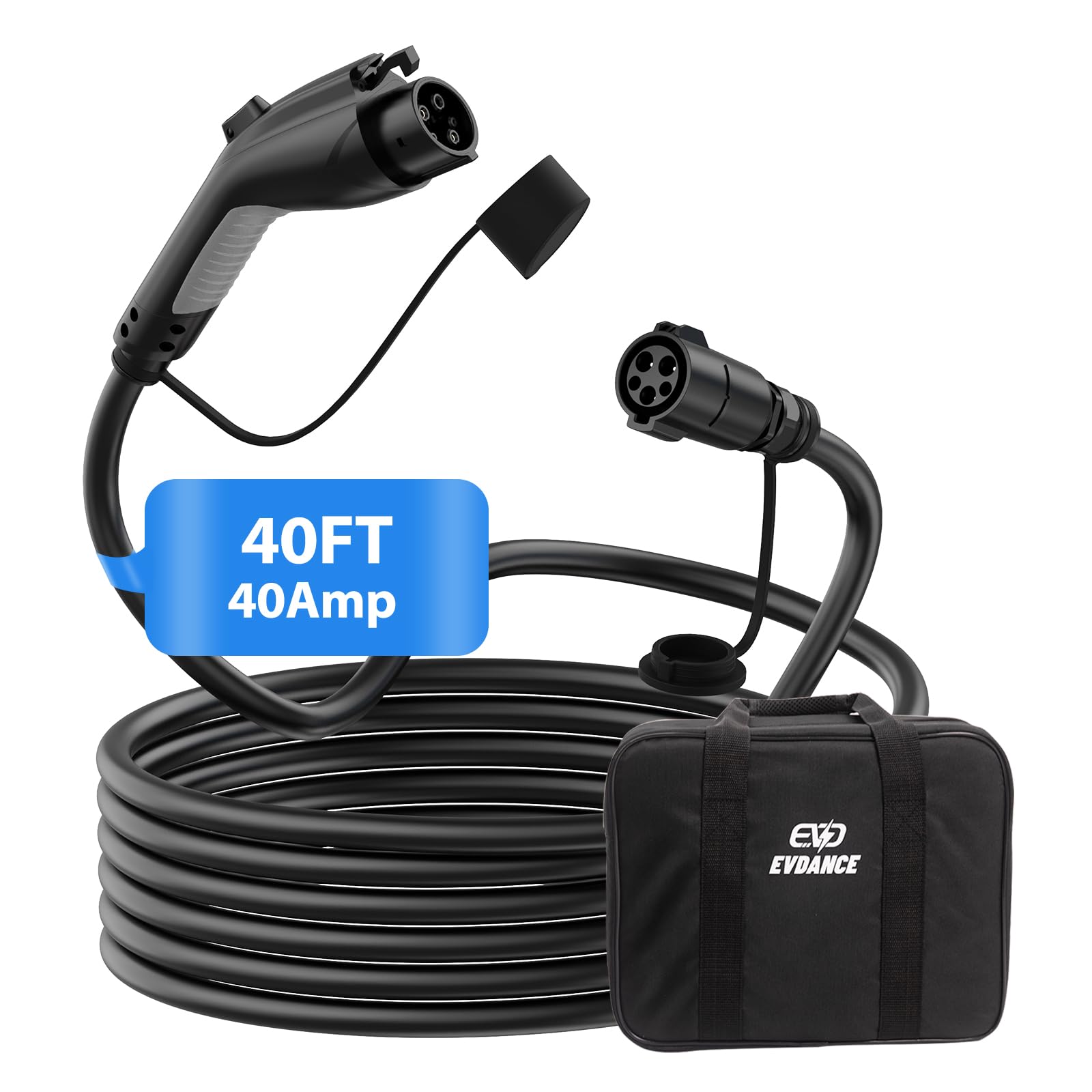The Differences Between Electric Car Chargers and Mobile Phone Chargers
As the world continues to embrace the transition to sustainable energy solutions, the demand for electric vehicles (EVs) has skyrocketed. With this surge in popularity, the need for efficient and reliable electric car charging infrastructure has become paramount. In this article, we will explore the key differences between electric car chargers and mobile phone chargers, shedding light on their functionalities, technical specifications, charging speeds, and safety considerations. By understanding these disparities, readers will gain a deeper appreciation for the unique requirements and challenges associated with charging electric vehicles.
1.Overview of Electric Car Chargers
1.1Functionality and Types:
Electric car chargers, also known as electric vehicle supply equipment (EVSE), are devices used to provide electric power for charging the batteries of electric vehicles (EVs). They serve as the interface between the electric grid and the vehicle's battery.
There are three main types of electric car chargers:
-
Level 1 Chargers: These chargers use a standard household outlet (120 volts AC) and provide the slowest charging speeds. Level 1 chargers are typically included with electric vehicles and are suitable for overnight charging at home.
-
Level 2 Chargers: Level 2 chargers require a dedicated 240-volt AC circuit and deliver faster charging speeds compared to Level 1 chargers. They are commonly installed at homes, workplaces, and public charging stations. Level 2 chargers can fully charge an electric vehicle in a few hours, depending on the battery capacity.
-
DC Fast Chargers: DC fast chargers, also known as Level 3 chargers, are the fastest charging option for electric vehicles. They use high-powered direct current (DC) to rapidly charge the battery. DC fast chargers are typically found at public charging stations, and they can provide a significant charge in as little as 30 minutes, depending on the vehicle's capabilities.
1.2 Technical Specifications:
Electric car chargers have various technical specifications that determine their compatibility and performance. Some key specifications include:
-
Connector Type: Different electric vehicles use different connector types, such as SAE J1772, CCS (Combo), CHAdeMO, or Tesla Supercharger. The charger's connector must match the vehicle's charging port.
-
Power Output: Electric car chargers have different power output ratings, measured in kilowatts (kW). Level 1 chargers typically provide around 1-2 kW, Level 2 chargers range from 3.3 kW to 22 kW, while DC fast chargers can deliver power levels of 50 kW or higher.
-
Charging Cable Length: The length of the cable that connects the charger to the vehicle is an important consideration. Longer cables provide more flexibility in parking and ensure that the charging port can be reached.
1.3 Charging Speeds:
Charging speeds vary depending on the charger type, the vehicle's charging capabilities, and the battery's state of charge. Generally, Level 1 chargers provide the slowest charging speeds, Level 2 chargers offer moderate speeds, and DC fast chargers deliver the fastest charging rates. However, it's important to note that the charging speed is also influenced by the vehicle's onboard charger and battery technology.
1.4 Safety Features:
Electric car chargers incorporate several safety features to protect the user, the vehicle, and the electrical infrastructure. Some common safety features include:
-
Ground Fault Circuit Interrupter (GFCI): GFCI technology detects ground faults and immediately shuts off power to prevent electric shocks.
-
Overcurrent Protection: Electric car chargers have built-in mechanisms to protect against excessive current flow, preventing damage to the charger, the vehicle, and the electrical system.
-
Temperature Monitoring: Chargers monitor the temperature of the charging process to prevent overheating and ensure safe operation.
-
Plug and Cable Locking: Some chargers have locking mechanisms to secure the connection between the charger and the vehicle, preventing accidental disconnection.
-
Communication and Authentication: Advanced chargers may include communication protocols and authentication mechanisms to ensure the charging process is secure and authorized.
2.Overview of Mobile Phone Chargers
2.1 Functionality and Types:
Mobile phone chargers are devices used to recharge the batteries of mobile phones and other portable electronic devices. They typically come in the form of a power adapter that connects to the phone via a charging cable. Mobile phone chargers provide the necessary power to replenish the phone's battery.
There are several types of mobile phone chargers available:
-
USB-A Chargers: These chargers use a USB Type-A connector, which is a standard USB port found on many computers, power adapters, and charging hubs. USB-A chargers are widely compatible with various mobile phones and portable devices.
-
USB-C Chargers: USB-C chargers feature a USB Type-C connector, which is a newer and more versatile standard. USB-C chargers offer faster charging speeds and can be used with a wide range of devices, including smartphones, tablets, and laptops.

-
Wireless Chargers: Wireless chargers, also known as inductive chargers, use electromagnetic fields to transfer energy between the charger and the phone. They eliminate the need for a physical connection and allow for convenient charging by simply placing the phone on the charging pad or stand. Wireless charging is supported by certain mobile phone models.
-
Portable Power Banks: Power banks are portable battery packs that can charge mobile phones and other devices on the go. They store electrical energy and can be charged from a power source, then used to recharge devices when needed.
2.2 Technical Specifications:
Mobile phone chargers have various technical specifications that determine their compatibility and performance. Some key specifications include:
-
Connector Type: The charger's connector type must match the port on the mobile phone. Common connector types include USB-A, USB-C, Lightning (used by Apple devices), and proprietary connectors specific to certain phone models.
-
Power Output: The power output of mobile phone chargers is measured in watts (W) or amperes (A). Higher power outputs allow for faster charging. USB-A and USB-C chargers typically provide power outputs ranging from 5W to 30W or higher, depending on the charger model and device compatibility.
-
Voltage and Current: Mobile phone chargers operate at specific voltage and current levels to provide the appropriate power for charging. Common voltage levels include 5 volts (V) for USB charging, and 9V or 12V for fast charging protocols like Qualcomm Quick Charge or USB Power Delivery (USB PD).
2.3 Charging Speeds:
The charging speed of a mobile phone charger depends on several factors, including the charger's power output, the phone's charging capabilities, and the charging protocol supported by both the charger and the device. Generally, higher power outputs and fast charging protocols result in faster charging speeds.
Different mobile phone models support various fast charging technologies, such as Qualcomm Quick Charge, USB Power Delivery (USB PD), or proprietary fast charging standards developed by phone manufacturers. These technologies allow for more rapid charging compared to standard charging methods.
It's important to note that the charging speed may also be influenced by the phone's battery capacity, its current charge level, and any software optimizations implemented by the phone manufacturer.
2.4 Safety Features:
Mobile phone chargers incorporate several safety features to protect the device, prevent overheating, and ensure safe charging. Some common safety features include:
-
Overcurrent Protection: Chargers have built-in mechanisms to prevent excessive current flow, protecting the phone's battery and internal circuitry from damage.
-
Overvoltage Protection: Chargers monitor and regulate the voltage to prevent it from exceeding safe levels, safeguarding the device against potential damage.
-
Short Circuit Protection: Chargers include safeguards to detect and prevent short circuits, which can occur due to faulty cables or other issues, minimizing the risk of damage to the charger and the phone.
-
Temperature Monitoring: Chargers monitor the temperature during the charging process to prevent overheating and ensure safe operation. They may adjust the charging speed or shut off if the temperature exceeds a certain threshold.
-
Surge Protection: Chargers may incorporate surge protection mechanisms to guard against voltage spikes and fluctuations in the power supply, protecting the connected phone and other electronic components.
3.Key Differences between Electric Car Chargers and Mobile Phone Chargers
3.1 Power Capacity:
One of the significant differences between electric car chargers and mobile phone chargers is the power capacity they can deliver. Electric car chargers are designed to handle much higher power levels compared to mobile phone chargers. Electric car chargers can deliver power outputs ranging from a few kilowatts (kW) to several hundred kilowatts (kW), depending on the charger type. In contrast, mobile phone chargers typically provide power outputs ranging from a few watts (W) to around 30W.
3.2 Charging Time:
Due to the higher power capacity of electric car chargers, they can charge a vehicle's battery much faster compared to mobile phone chargers. Electric car chargers can provide a significant charge in a few hours, with DC fast chargers capable of delivering a substantial charge in as little as 30 minutes, depending on the vehicle's capabilities. On the other hand, mobile phone chargers generally take a few hours to fully charge a phone's battery, depending on the device and charger specifications.
3.3 Charging Port:
Electric car chargers and mobile phone chargers use different types of charging ports. Electric vehicles typically have dedicated charging ports, which can vary depending on the vehicle manufacturer and charger compatibility. Common electric vehicle charging ports include SAE J1772, CCS (Combo), CHAdeMO, and Tesla Supercharger connectors. In contrast, mobile phone chargers use various connector types, such as USB-A, USB-C, Lightning (for Apple devices), or proprietary connectors specific to certain phone models.
3.4 Safety Considerations:
Both electric car chargers and mobile phone chargers incorporate safety features, but the specific safety considerations can differ. Electric car chargers are designed with higher safety standards to handle the higher power levels involved in charging electric vehicle batteries. They incorporate features such as ground fault circuit interrupters (GFCIs), overcurrent protection, temperature monitoring, and plug and cable locking mechanisms.
Mobile phone chargers generally have lower power capacities and may have fewer safety features compared to electric car chargers. However, they still include safety mechanisms like overcurrent protection, overvoltage protection, short circuit protection, temperature monitoring, and surge protection.
3.5 Infrastructure Requirements:
Electric car chargers require specific infrastructure for installation and operation. Level 1 chargers can typically be plugged into a standard household outlet (120 volts AC), while Level 2 chargers require a dedicated 240-volt AC circuit. DC fast chargers, which offer the fastest charging speeds, require more substantial electrical infrastructure and are typically found at public charging stations. These charging stations require a higher power supply and often need specialized installation by qualified electricians.
4.Future Trends and Developments
-
Higher Power Charging: As electric vehicles become more prevalent, there is a growing demand for faster charging speeds. Charging infrastructure is expected to evolve to support higher power levels, enabling charging times to decrease significantly. This includes the deployment of ultra-fast charging stations that can deliver power outputs of several hundred kilowatts, allowing for rapid charging within minutes.
-
Wireless Charging Advancements: Wireless charging technology is expected to continue advancing, offering more efficient and convenient charging options. This includes improvements in charging efficiency, larger charging distances, and the ability to charge multiple devices simultaneously on a single charging pad. There might also be advancements in technologies like radio frequency (RF) charging and long-range wireless charging, enabling devices to charge without direct physical contact with a charging pad.
-
Bidirectional Charging: Bidirectional charging, also known as vehicle-to-grid (V2G) or vehicle-to-home (V2H) technology, allows electric vehicles to not only receive power but also supply power back to the grid or a home. This technology enables the vehicle's battery to serve as a mobile energy storage system, which can be used during peak demand periods or in emergency situations. Bidirectional charging is expected to play a significant role in the development of smart grids and renewable energy integration.
-
Standardization and Interoperability: With the increasing variety of charging connectors and protocols, there is a growing need for standardization and interoperability. Efforts are underway to establish common standards for electric vehicle charging connectors and protocols to ensure compatibility across different charging networks and reduce consumer confusion.
-
Enhanced Safety Features: Safety will continue to be a paramount concern in charger development. Future chargers may incorporate advanced safety features, such as enhanced fault detection and prevention mechanisms, improved temperature management systems, and better protection against electrical surges and power fluctuations.
-
Intelligent Charging Solutions: Smart charging solutions that leverage artificial intelligence (AI) and machine learning algorithms are expected to emerge. These solutions can optimize charging schedules based on factors like energy prices, grid demand, and user preferences. By intelligently managing charging sessions, these systems can help reduce peak loads, lower energy costs, and enhance overall grid stability.
-
Portable and On-the-Go Charging: Portable charging solutions, such as compact power banks and lightweight chargers, will continue to evolve to meet the needs of mobile users. These chargers may incorporate higher power capacities, faster charging speeds, and improved energy efficiency to provide reliable charging options while on the go.
-
Eco-Friendly Charging: There is a growing emphasis on developing environmentally friendly charging solutions. This includes the use of renewable energy sources, such as solar and wind, to power charging infrastructure. Additionally, efforts are being made to reduce the environmental impact of charger manufacturing processes and improve the recyclability of charger components.









